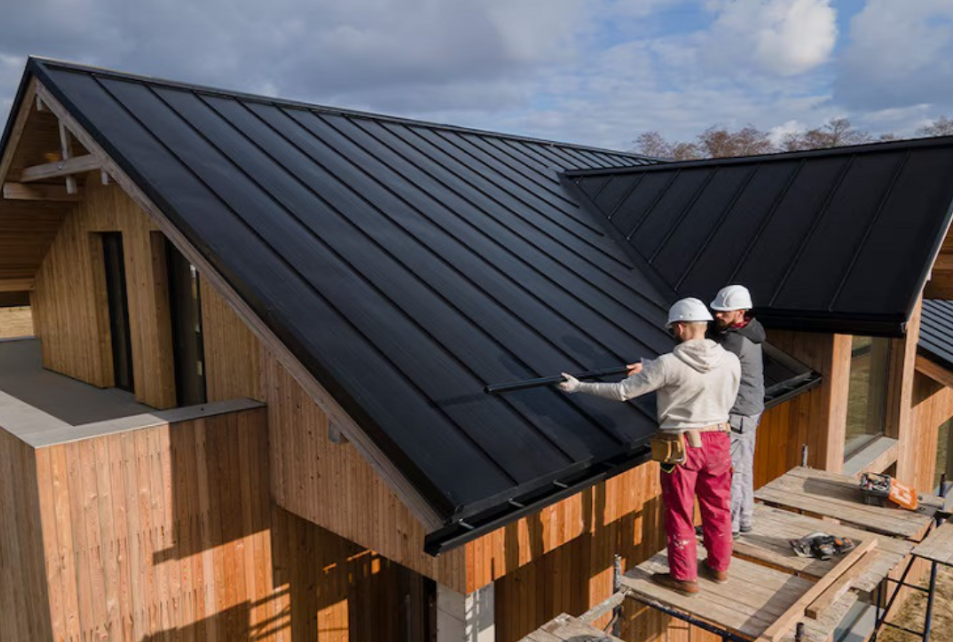
Choosing the Perfect Rain Gutters on Metal Roofs Made Easy
While metal roofs are increasingly gaining wide acceptance owing to their longevity, weather-resistance, durability, and visual appeal, their effectiveness is largely dependent on the guttering system. Rain gutters on metal roofs play the critical role of channelling away rainwater from the foundation of a house, preventing roof leaks and mould formation, and keeping soil erosion at bay. Hence, for the protection of a property’s structure as well as surrounding areas like yard and garden, gutters are essential. Now, the availability of different types of guttering in the market can make it seem like a daunting task to choose the right one for your metal roof. Hence, this guide shares the nuances of each type as well as the other factors to be mindful of before finalising a gutter system.
Types of Rain Gutters on Metal Roof
Metal roof drainage systems can be of the following types and each is unique in terms of advantages and features:
- Half-Round: Aesthetic and conventional, half-round gutters mimic cylindrical tubes cut in half. They are durable, last for years, are efficient at draining water, and go well with a variety of roofing materials including metal. The semi-circular and smooth design keeps clogs to a minimum and makes maintenance fuss-free too. The arched style enables the easy flow of water as well as debris. This is also the reason why availing gutter cleaning services for this half-round style is an affordable affair. If you are looking for a mix of classic elegance and practicality, half-round gutters can do the trick.
- Box: Among the different types of guttering, the box style is famed for its unobtrusive and sleek appearance. These gutters seamlessly blend with any metal roof and are effective at water drainage too. Box gutters are also the ideal pick if you are looking for integrated rainwater systems for metal roofing. They complement any architectural style and merge flawlessly with the metal roof structure for a chic look.
- K-Style: Available in materials like steel, aluminium, vinyl, and copper, K-style gutters are a versatile solution for rainwater drainage. Used in both commercial and residential structures, these gutters resemble crown moulding on interior walls. K-style gutters are aesthetically pleasing, require fewer downspouts, and keep leaks to a minimum. Based on the material, these can last a long time too. The guttering installation process in this case is also simple, owing to seamless options.
Factors to Consider When Choosing Rain Gutters on Metal Roof
Now that you know about the different types of guttering, it is time to look into the other key considerations involved in the gutter selection process. After all, your choice should align with your distinct needs.
- Size: You need to pick the gutter size based on the amount of rainfall or snowfall you receive in your region. The heavier the rainfall, the larger should be the gutter size, for easy collection and drainage. Choosing the right size can also prevent the problem of overflowing gutters.
- Material: When it comes to gutter materials for metal roofs, steel, aluminium, and copper are the common options. Let’s delve into the attributes of each material:
Copper: Though pricey, gutters made of copper are exceptionally long-lasting, durable, and perfect if you experience extreme weather conditions or heavy snowfall. Over time, they also form a unique patina, which is attractive. Copper gutters are especially apt for old or heritage buildings.
Stainless Steel: Metal roof drainage systems made of stainless steel are also durable and require low maintenance. They have a sleek, contemporary look and can effectively resist corrosion and rust. Stainless steel gutters are cost-effective too.
Aluminium: Owing to corrosion resistance, aluminium gutters go well with metal roofs. Being lightweight, they exert less stress on the roof structure too. Moreover, there are plenty of styles and colours to choose from. Or you can paint the gutters the way you want to match the roof. - Durability: When it comes to rainwater systems for metal roofing, you ideally want something that won’t require frequent replacements or repairs. Otherwise, it can cost you heavily. Hence, it is crucial to consider durability. This is the reason why gutter materials for metal roofs, like copper, stainless steel, galvanised steel, and aluminium are the best options as they make for a robust drainage system and are resilient against unkind weather.
- Quantity of Water and Debris: You must account for the amount of rain, snow, or ice you are likely to receive before picking gutters. What works well for light rains will not hold up during torrential downpours. Also consider debris like leaves, twigs, dirt, loose stones, etc. Basically, the gutters shouldn’t clog up easily.
- Installation Ease: The guttering installation process should ideally be hassle-free, so that the outcome is clean, efficient, and you save on labour costs as well. Since seamless gutter systems are customised as per your roof and home, they are easy to install and prevent blockages and leaks too. They fit seamlessly against a metal roof and can be installed quickly. Gutters made of vinyl come with snap-together components and are easy to install too but not apt for heavy rains. Aluminium and steel gutters, on the other hand, are stronger but it takes more effort to install them.
- K-Style: Available in materials like steel, aluminium, vinyl, and copper, K-style gutters are a versatile solution for rainwater drainage. Used in both commercial and residential structures, these gutters resemble crown moulding on interior walls. K-style gutters are aesthetically pleasing, require fewer downspouts, and keep leaks to a minimum. Based on the material, these can last a long time too. The guttering installation process in this case is also simple, owing to seamless options.
Conclusion
So, by now, you are not only aware of the different types of guttering, but also the multiple factors to keep in mind before choosing the right gutters for your metal roof. Apart from the material, size, and durability of the gutters, you need to consider the ease of installation, drainage needs, and cost. But your responsibility doesn’t end once you have zeroed in on the perfect gutters and gotten them installed. You must get them inspected and cleaned periodically and especially after harsh weather events like heavy rains, snowfalls, or hailstorms. FastRoofing can help you with that. Besides installation and replacement services, the experts here offer gutter cleaning services that are safe, efficient, and affordable. Contact them today for everything related to guttering.
